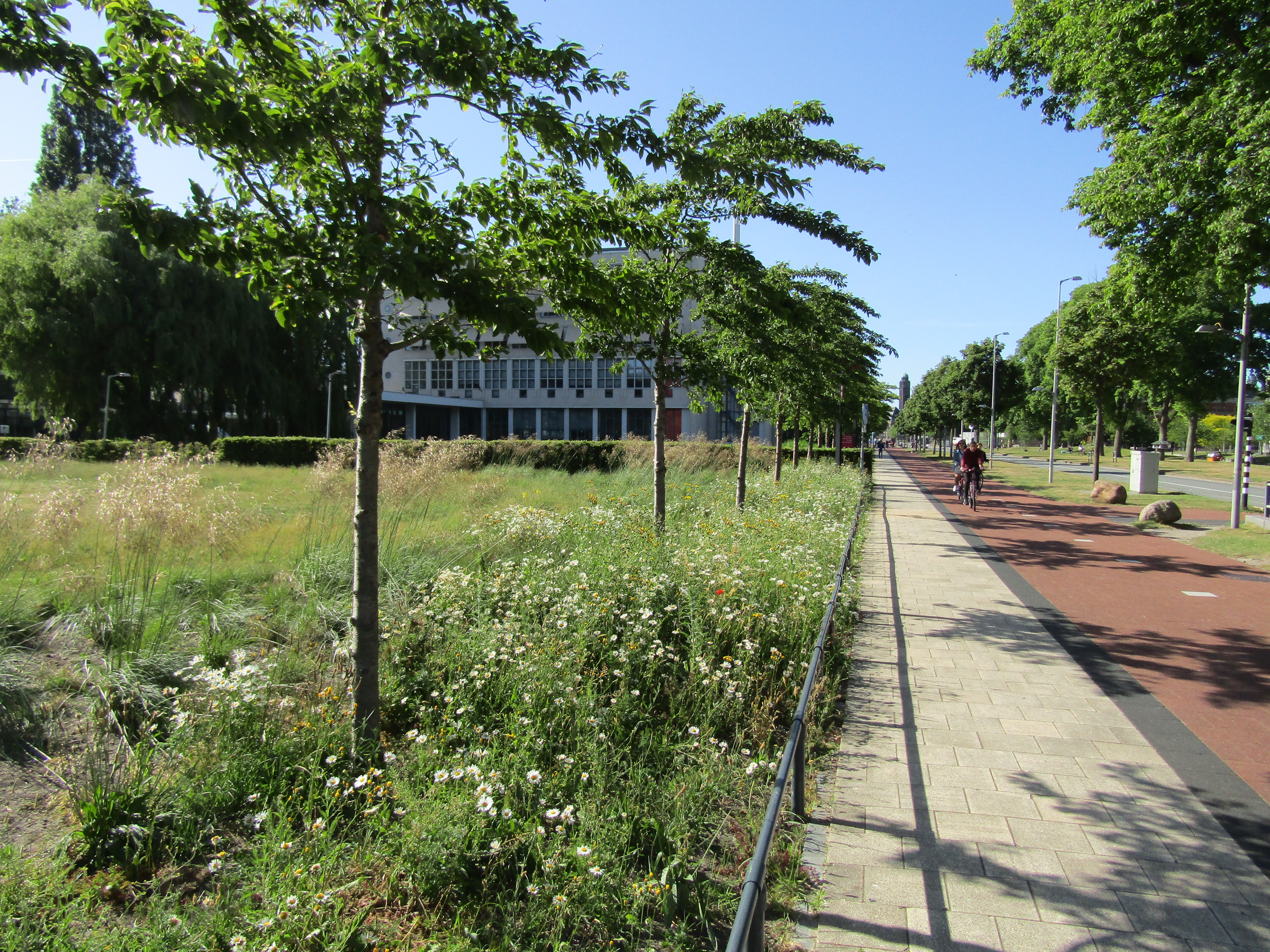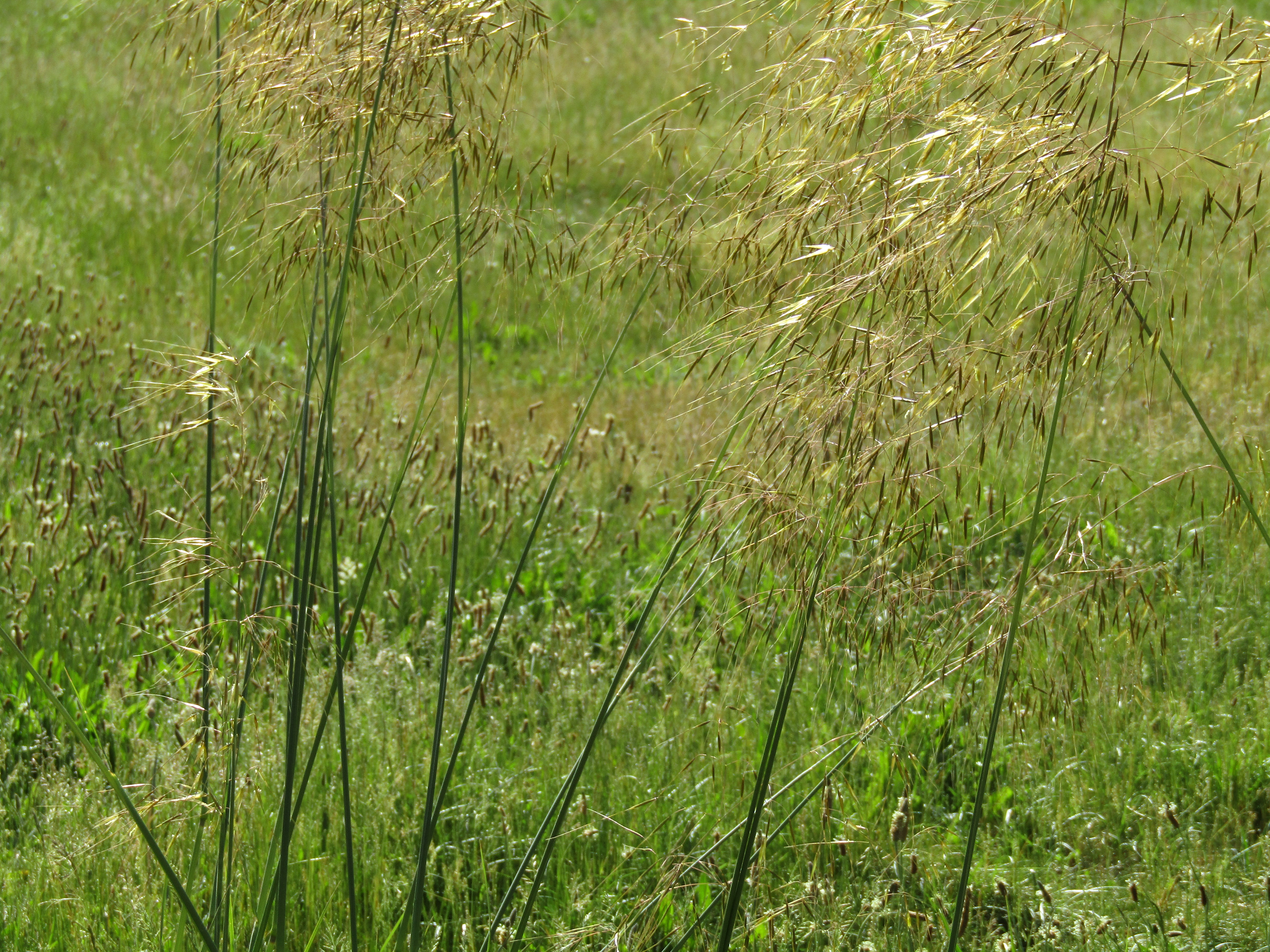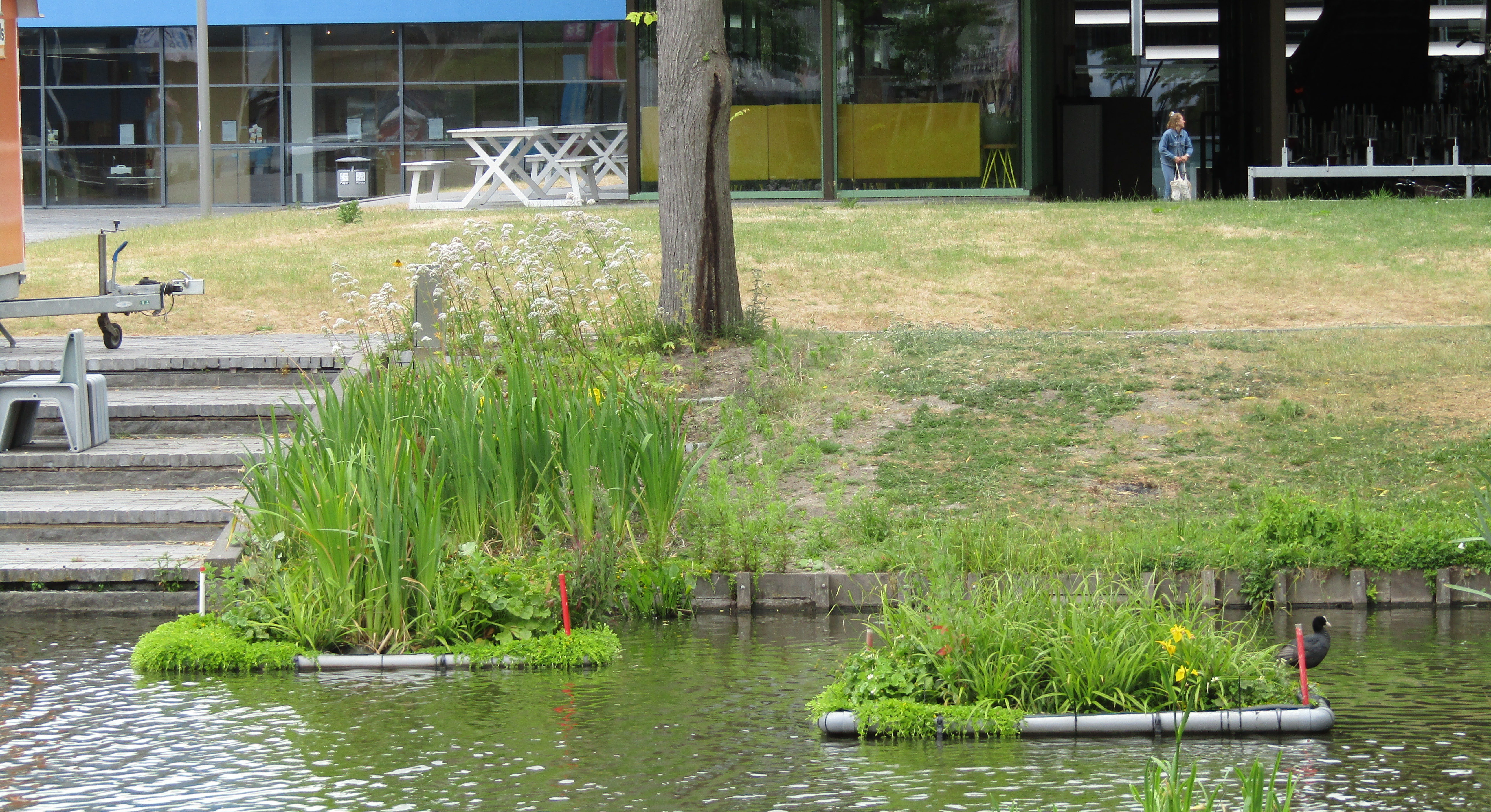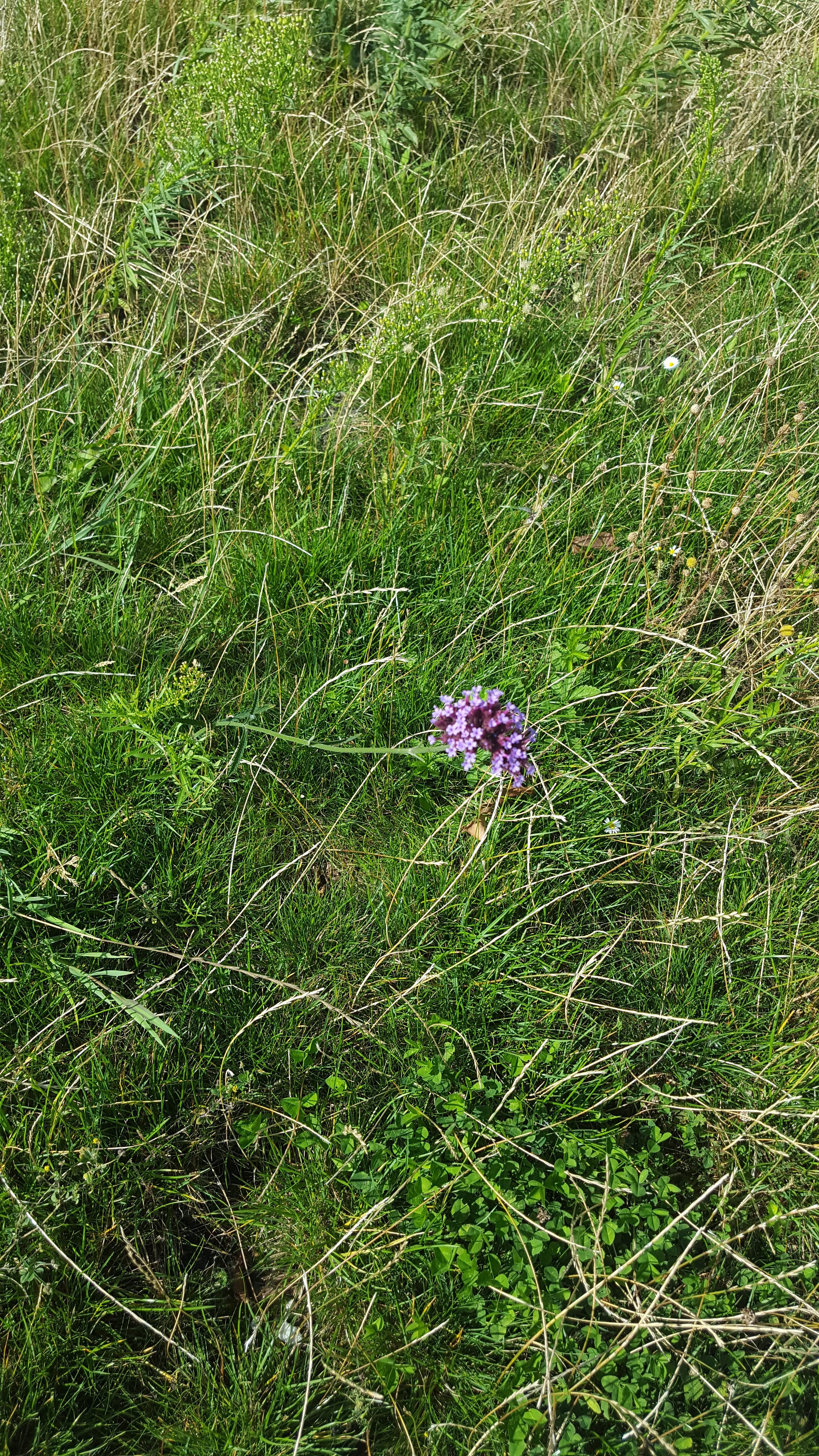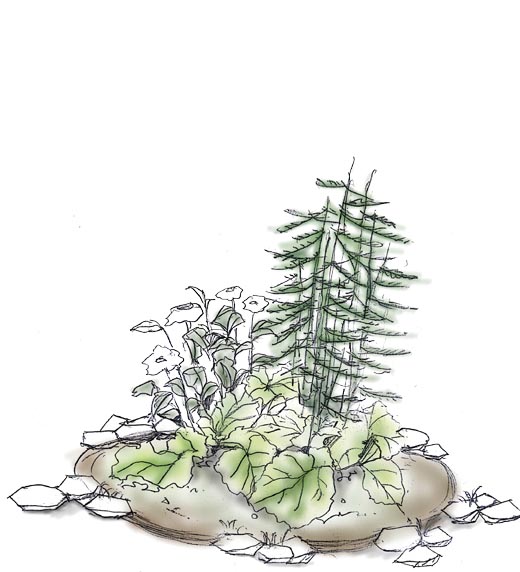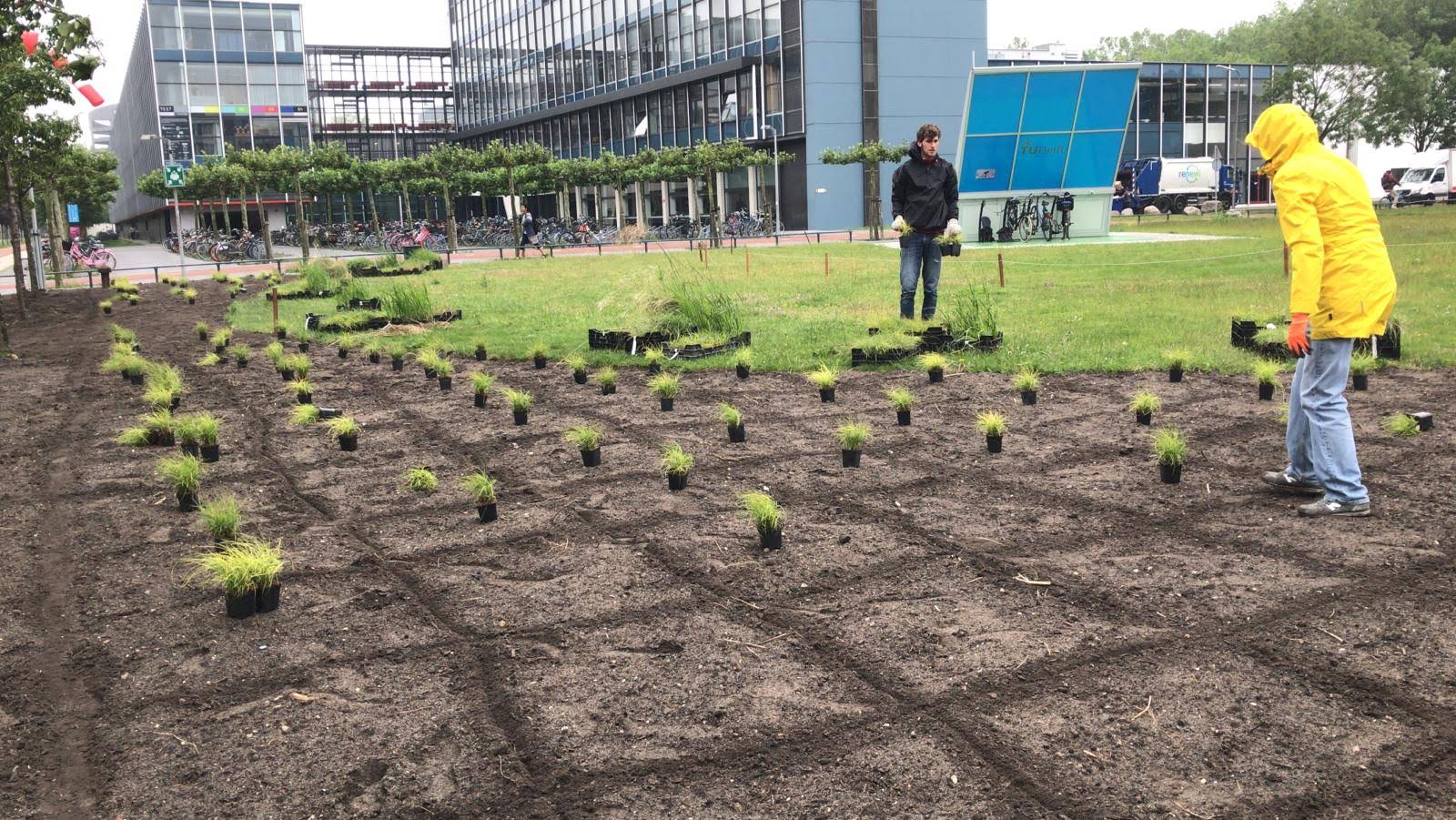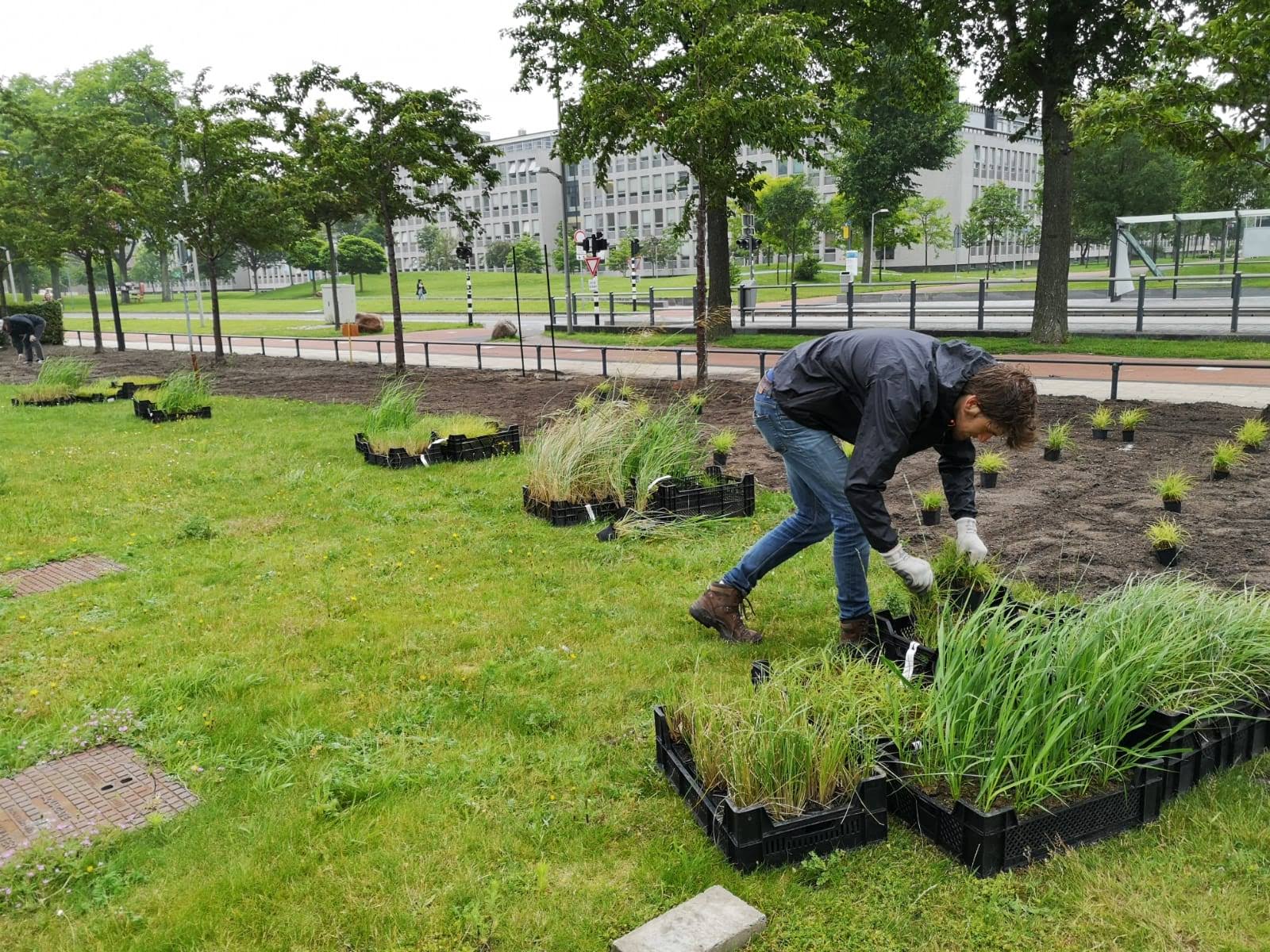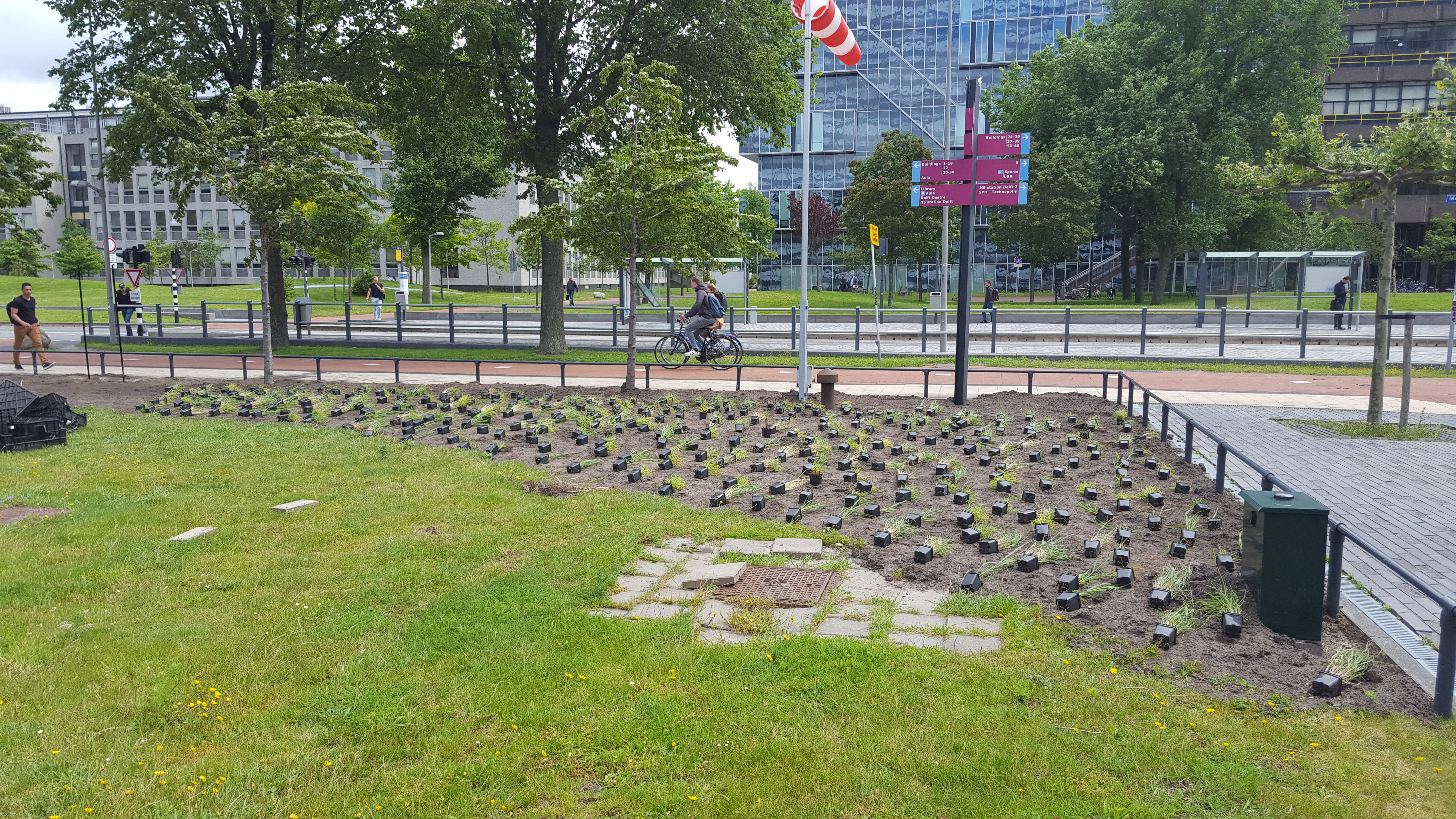Anthropocene
Typologie: garden, public space
Location: Visitors map, TU Delft campus, Delft, NL
Team: Alexander Stal, Alia Shahed, Barsha Amarendra, Beiqi Yuan, Bledar Zaho, Carmen Yuen, Emma Kannekens, Eva Groen, Hanwen Hu, Jie Zhao, Lotte Oppenhuis, Matthijs Hollanders, Margot Hols, Rotem Shenitzer Schwake & Willemijn Schreur
Tutors: Bieke Cattoor, Denise Piccinini & Nico Tillie
Article: Students return lost flora to campus
In the age of the Anthropocene, human activities are the dominant influence on the earth’s climate and environment. Humans’ influence is no longer just within botanical gardens, but at every corner of the earth’s environment, thus shifting the relationship between human and nature. In response to this, the Pollination Project, as the project was called, rethinks the human-nature relationships and reinterprets what botanical gardens mean today in terms of education, research, and conservation.
Unlike traditional approaches of walled gardens and greenhouses which tend to focus on the creation of specific microclimates and environments to support exotic species, the Pollination Project inverses this approach. The project looks outwards, as it identifies the value and opportunity of existing or modified urban microclimates before revealing, enhancing, and conserving these environments. Plants are fitted in existing habitats instead of creating a habitat for certain plantspecies. The urban environment therefore acts as an "inverted greenhouse". By revealing and highlighting existing urban microclimates, the Garden of the Microclimates is created.
The aim is to trigger people’s curiosity and initiate conversations between visitors about the human-nature relationships as they visit the projects individually or collectively, intentionally or by chance. These conversations allow awareness to be raised and knowledge to be spread. Like bees pollinating flowers, visitors will pollinate awareness and knowledge. The project not only raises awareness by the designs itself, but also by signage and the opening event on which we showed the project to the audience.
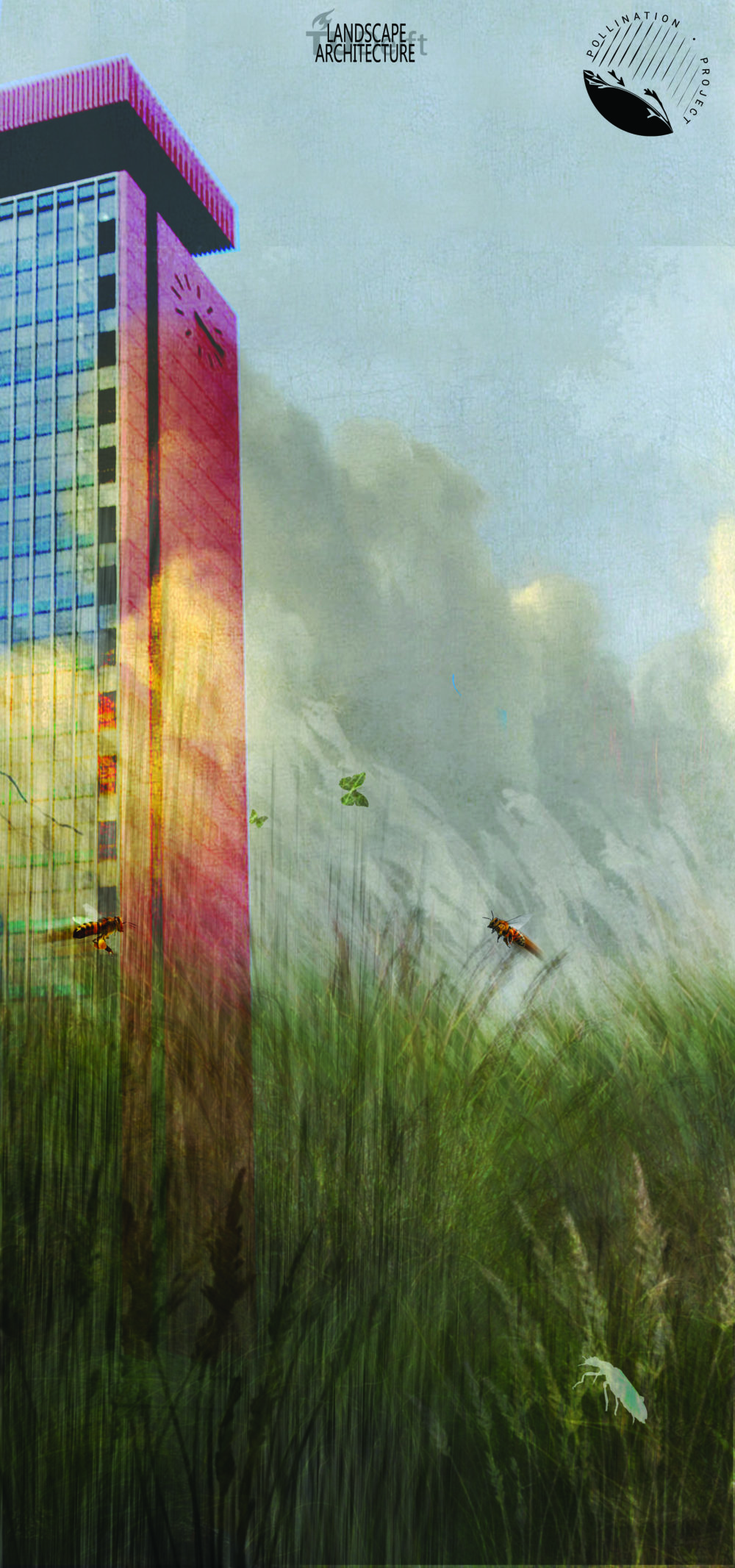
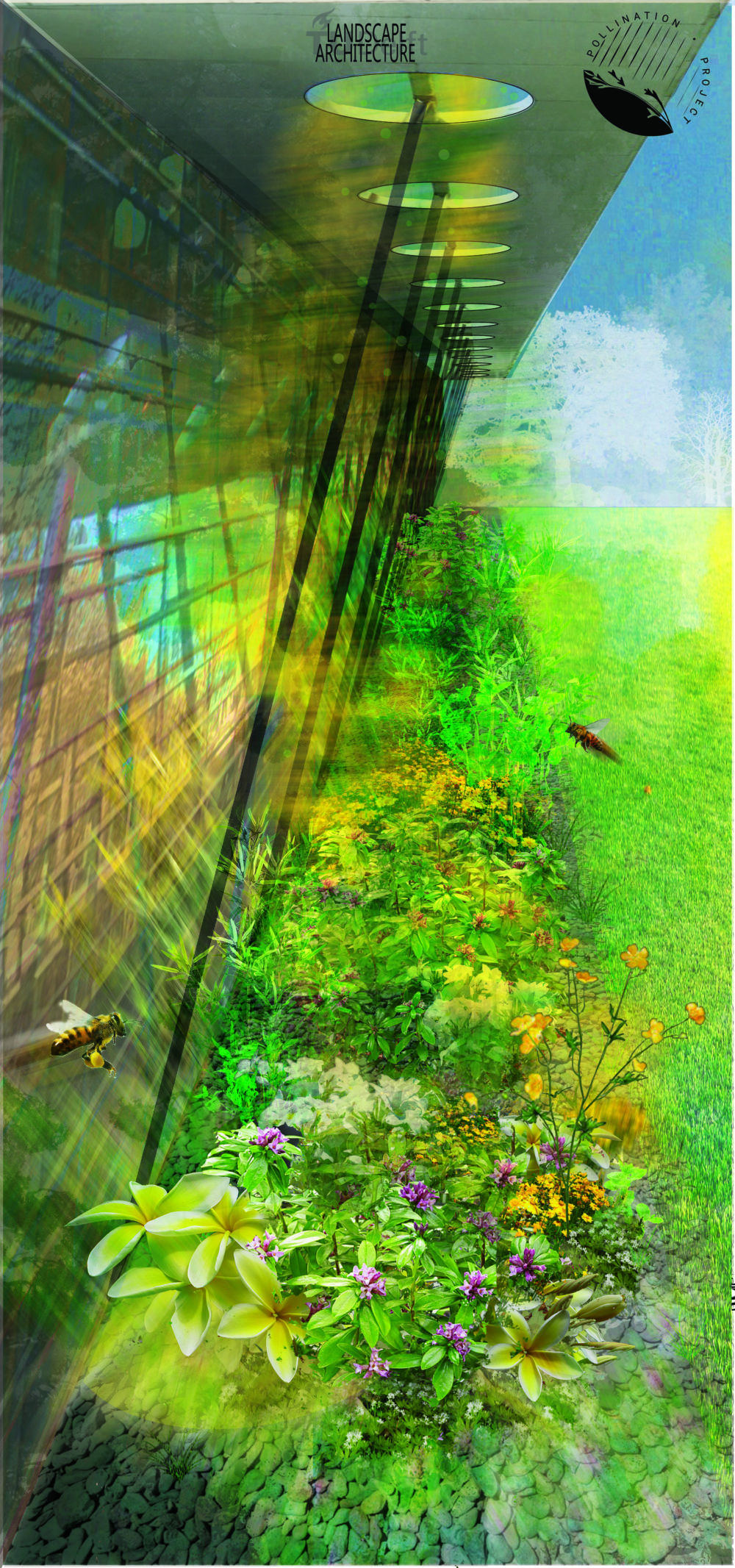
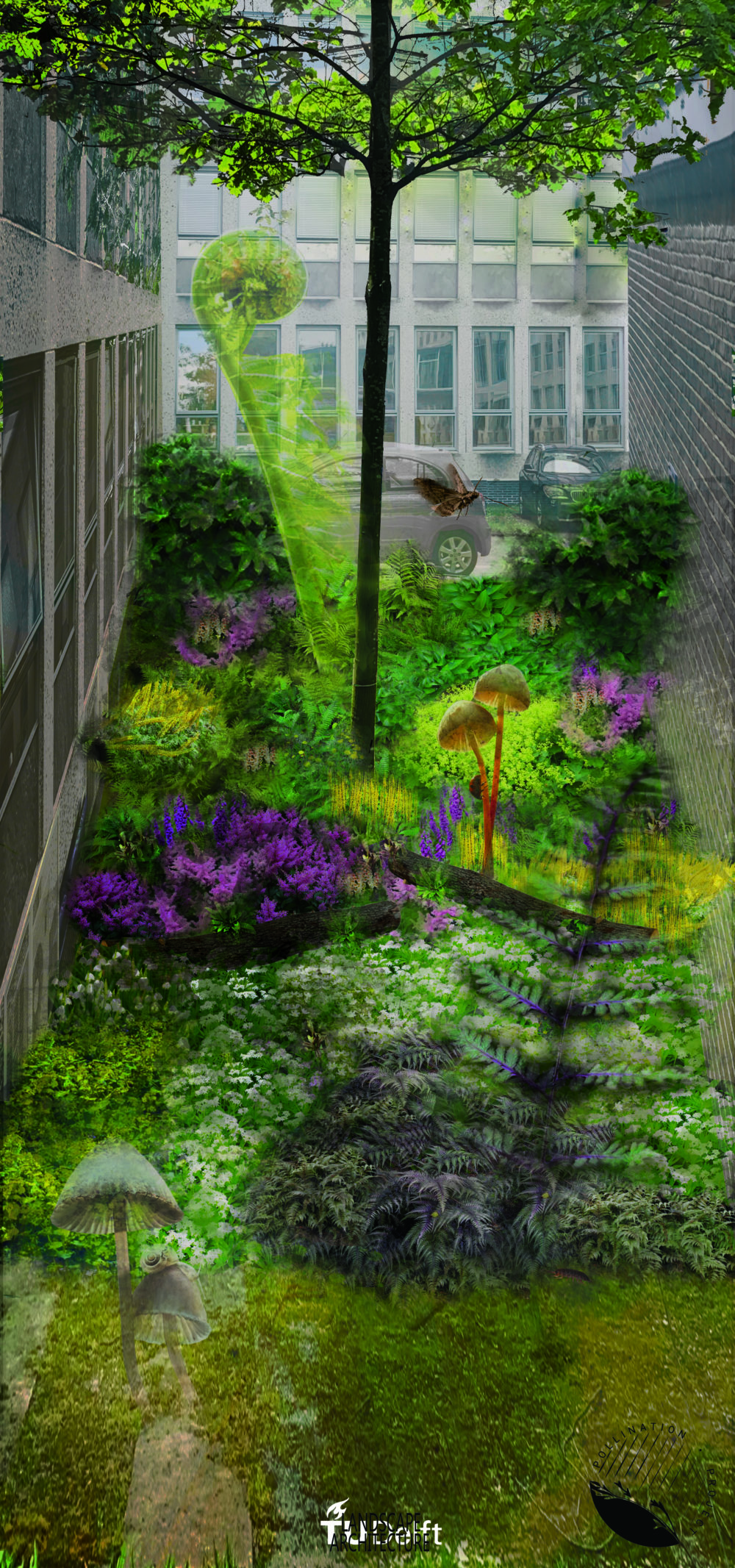
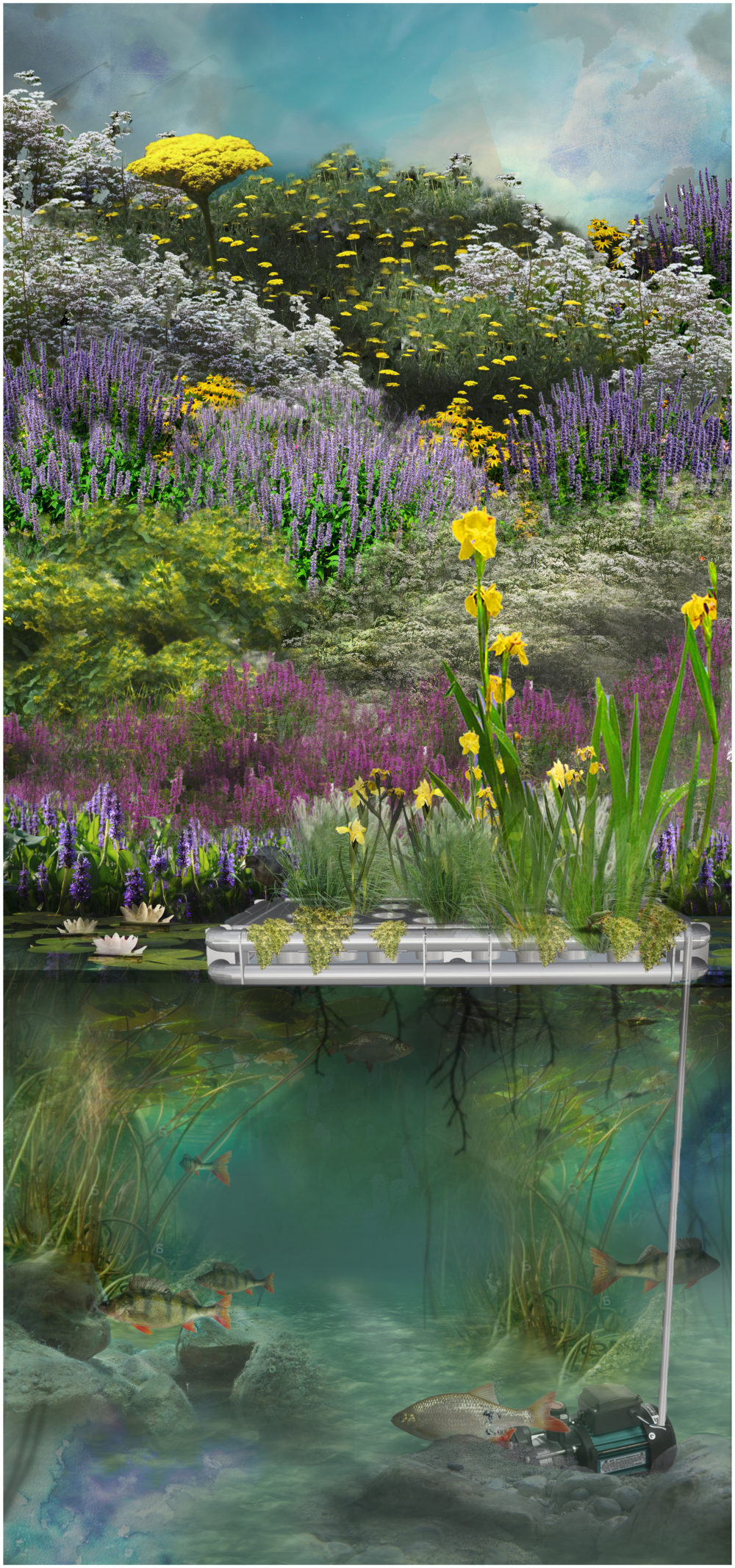

Whispering winds
This site is already quite notorious for its conditions; situated on a lawn next to the EWI building. When it is a windy day, cyclists are falling off their bike due to the winds force. The tall, wide and flat shape of the building in combination with its perpendicular placement to the main winddirection creates a windtunnel.
The combination of a tight mowing regime and the strong winds prevent the biodiversity from growing. Besides, because of the strong winds, visitors often have a negative association with this site. Because of the strong wind, other conditions such as a particular temperature differences or extreme moist or dry soil aren't directly noticable.
The goal of this site is to change the current negative thoughts about this microclimate into positive ones. By using tall grasses that bend in the wind and thrive by wind climates, the garden design will show the aesthetic qualities of the wind. The grasses' seedheads might even make sounds in the wind, so the grasses will not only add a visual but also an audible quality to the microclimate. Second, the grasses will provide shelter for other plant species, insects and cyclists passing mekelpark. The sheltered areas stimulate biodiversity. The shape of the garden shows the windmovement around the EWI building. This shape is made by different vegetations.
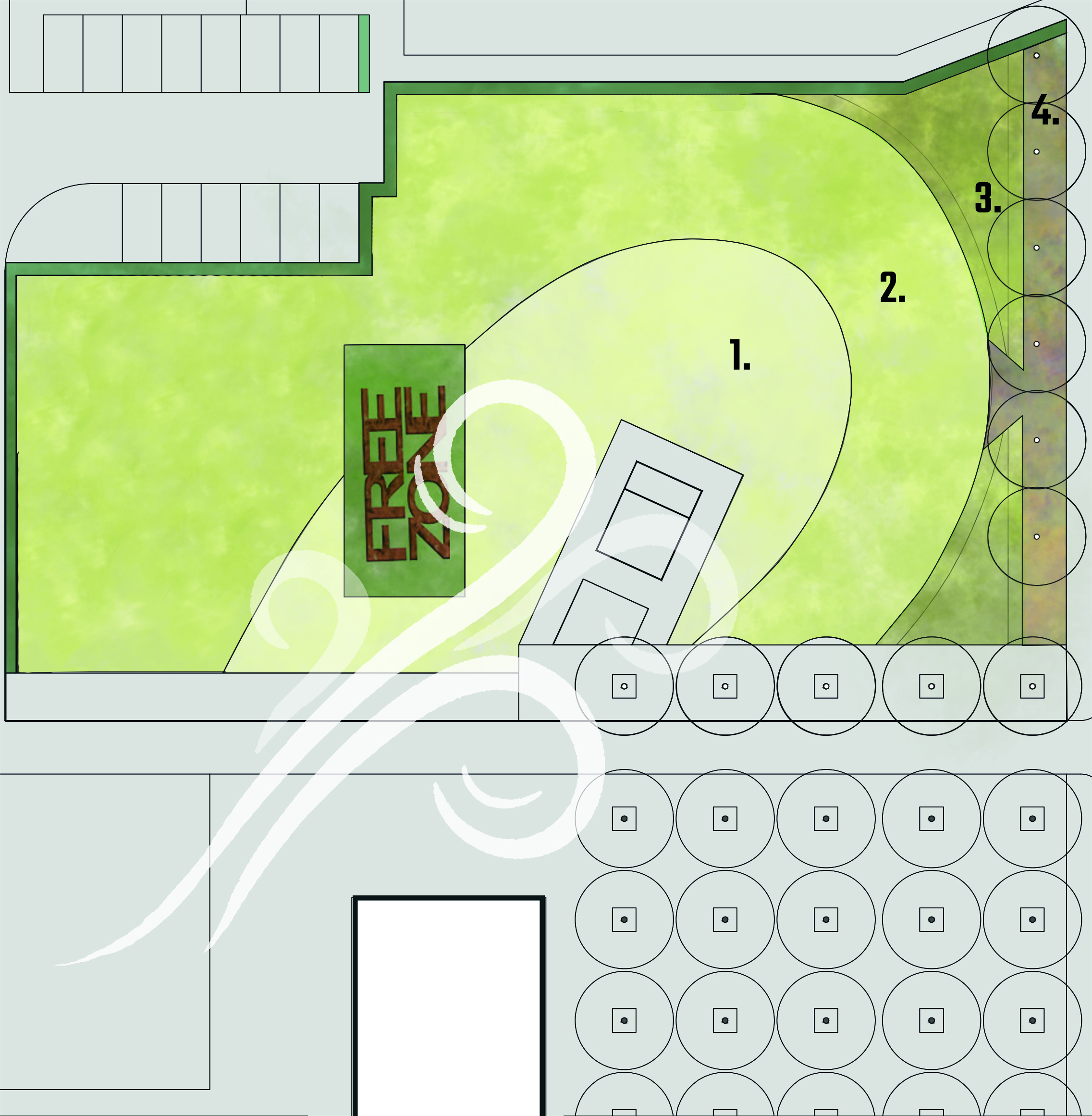
The Mekelpark is a highly maintained park in which all the grass is mowed. This site is a showcase for how different mowing regimes and plantations have a different outcome and ecological value. Area 1 and 2 are only adjusted by maintenance. Area 1 will be mowed as frequently as always. Area 2, on the other hand, will be mowed as little as possible. This will stimulate the process of succession, hence native grasses and flowers will start to grow. This area can grow up to one meter high. Area 3 and 4 are transformed by planting and sowing new species. In area 3, this consists of higher, non-native, grass species can reach up to two meters and which break the wind to provide shelter. Area 4 is sown with a native flower- and grass mix, which will provide a home for birds and insects. Because area 4 is located east of area 3, the area is sheltered from the wind.
Monitoring this proces will show the richness of grasslands and how different starting points (seeds or mowed grass) develop over time. The project could grow further by adding taller grasses and extending the differences in mowing regimes. Whispering Winds serves as an example of spatial experience, placemaking and increasing ecological variety and value to the TU Delft campus environment.

Watertrace
One of the icons on the TU Delft campus is the library. This building provides spots for studying, day and night. Having one main entrance, guests often don't visite the backside of the building. At this 'other side', the building reaches its heighest point with a big overhanging roofstructure. Underneath this extension, the ground is covered with pebbles and weeds. The weeds are creating an interesting pattern and have lead to further exploration in the design process. However, in the original design of the building there has not been thought about the influence of the building on the surrounding landscape.
The aim is to create a stronger relationship between the building, it's users, flora and fauna and to symbolically combine these together in a garden. By using a gradient of intervention in the garden design, the relationship between humans and nature is explored. Besides, biodiversity is promoted. Lastly, the goal of this garden is to provide a new experience and knowledge to the users of the library.


The design follows the wet and moist conditions created under the roof during winter. Next, it also responds to the sun path and soil conditions. The design consists of 12 micro-gardens that reflect the roof’s voids. The gardens experiment with a gradient of interventions, that fit the microclimate of the shaded and wet area beneath the roof. The gradient goes from minimum human intervention to a great human intervention, and can be seen as a plant library that will introduce new species and biodiversity to the site. For example, on the lower intervention scale, room is made for native species that are already growing on the site. At the other side, there is urban farming with vegetables that can thrive in shade and moist. The most extreme intervention are the techno gardens, where experiments with bio-based materials can take place.
The design follows the wet and moist conditions created under the roof during winter. Next, it also responds to the sun path and soil conditions. The design consists of 12 micro-gardens that reflect the roof’s voids. The gardens experiment with a gradient of interventions, that fit the microclimate of the shaded and wet area beneath the roof. The gradient goes from minimum human intervention to a great human intervention, and can be seen as a plant library that will introduce new species and biodiversity to the site. For example, on the lower intervention scale, room is made for native species that are already growing on the site. At the other side, there is urban farming with vegetables that can thrive in shade and moist. The most extreme intervention are the techno gardens, where experiments with bio-based materials can take place.
Cleaning and construction work in the near future prevented the design from being carried out completely. For this reason only the Rainwater garden is constructed. When the work is done, the other eleven gardens will also be planted and the gradient of human intervention will be completed. This garden is not just there for aesthetic value. It also has a function as a material bank, with the gardens high on the gradient providing materials for human use such as vegetables or biodegradable construction materials. And the gardens lower on the gradient form a material bank for species such as bees, birds and other insects. Of course, there is no straight line between the two ‘users’, they will probably use an overlapping area. And this is also important because both parties need each other to pollinate, clean and prune the gardens.
Cleaning and construction work in the near future prevented the design from being carried out completely. That is why at this moment only the Rainwater garden is constructed. When the work is done, the other eleven gardens will also be planted and the gradient of human intervention will be completed. This garden is not just there for aesthetic value. It also has a function as a material bank, with the gardens high on the gradient providing materials for human use such as vegetables or biodegradable construction materials. And the gardens lower on the gradient form a material bank for species such as bees, birds and other insects. Of course, there is no straight line between the two ‘users’, they will probably use an overlapping area. And this is also important because both parties need each other to pollinate, clean and prune the gardens.
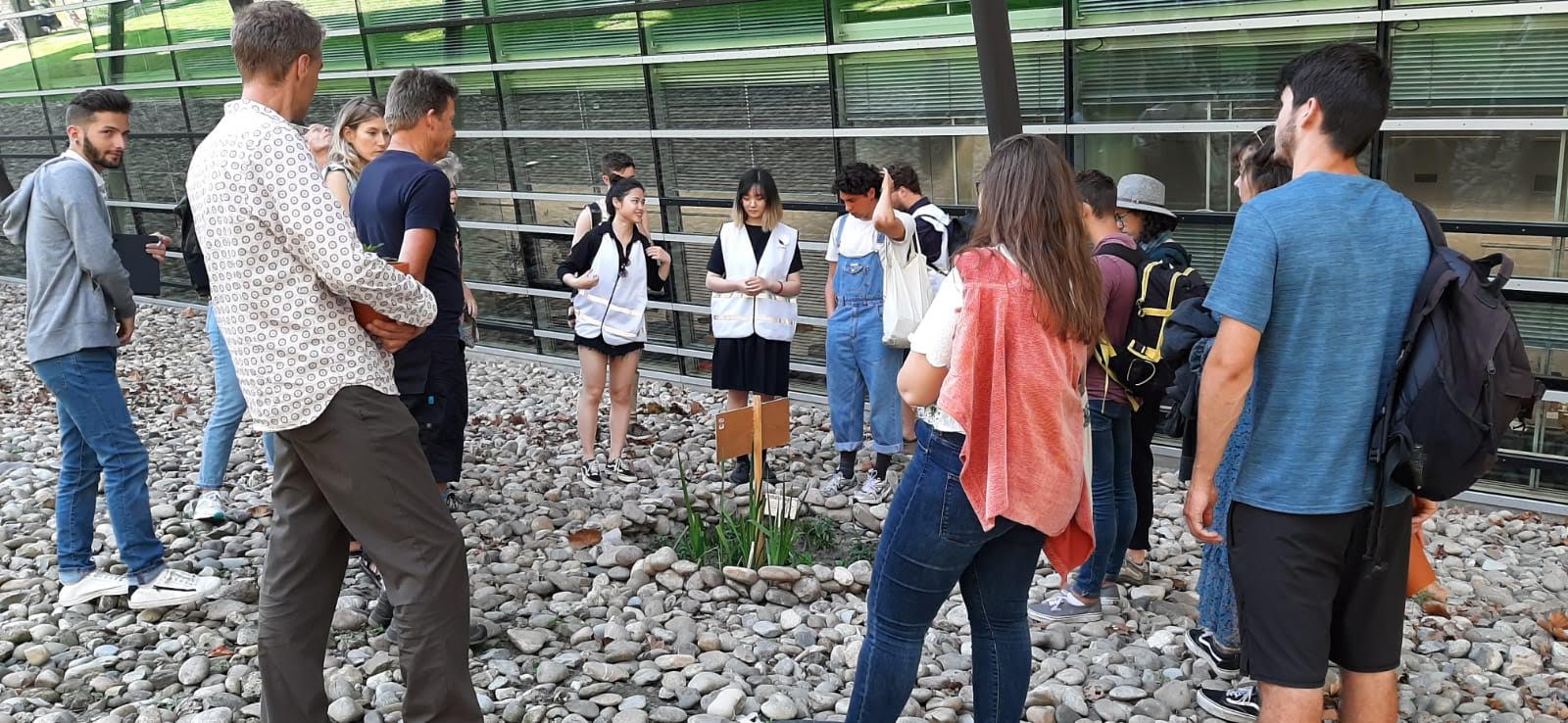

Red listed shadow garden
Within one of the courts of the Faculty of Applied sciences lies the Red Listed garden. A first glance leaves an impression of only a paved parking space and a few trees along the edge of the building. But upon walking further into the courtyard, a hidden gem occurs: a small green patch with two American Oak trees and a moss covered path is squized between the building and a shed.
Upon assesing the site's microclimatic conditions, it was found that the building configuration creates a shaded spot throughout almost the entire day. Being shaded, it also thereby has the quality of being moist. There is a slight wind but that is not the most standout condition that the site presents.
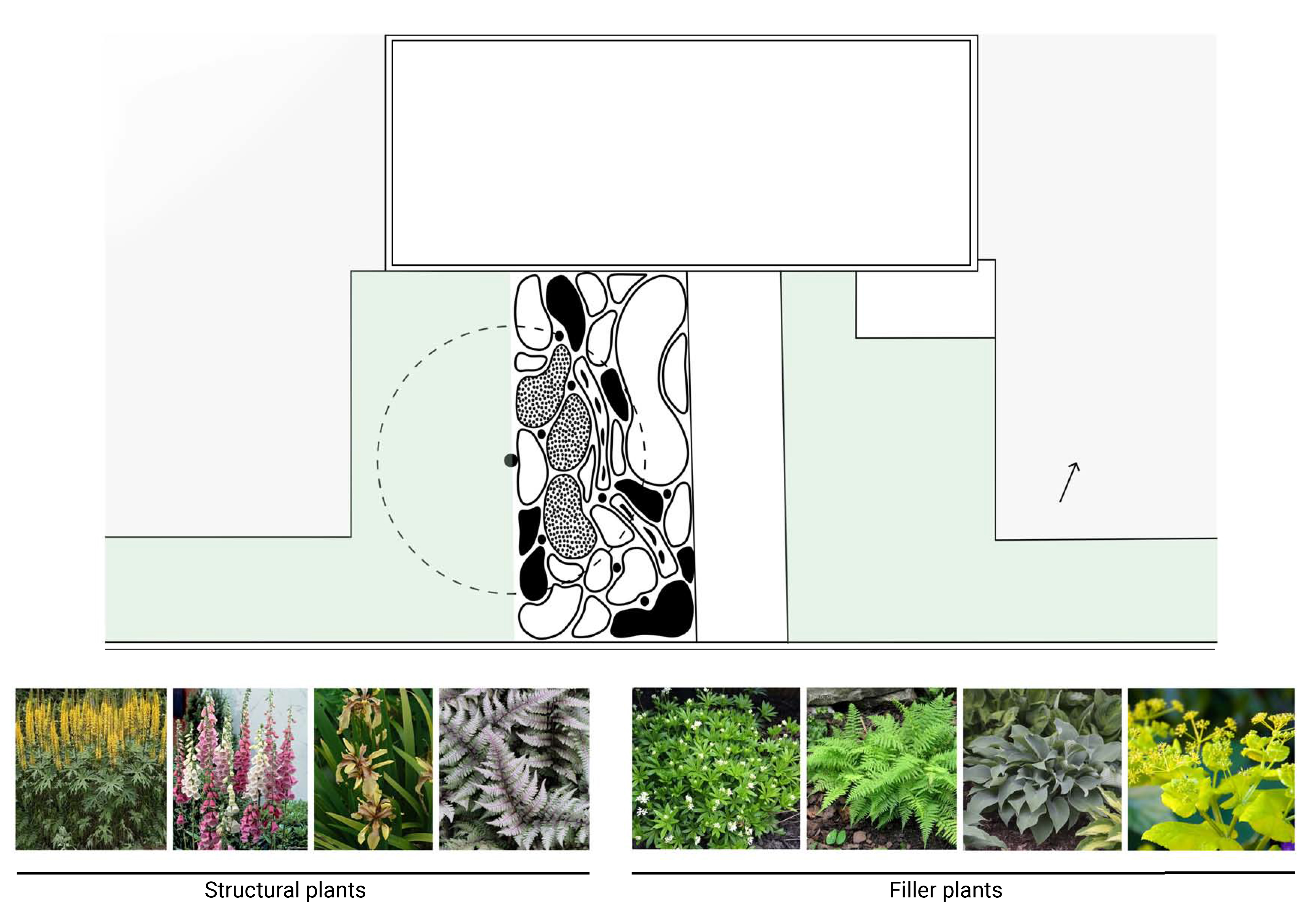
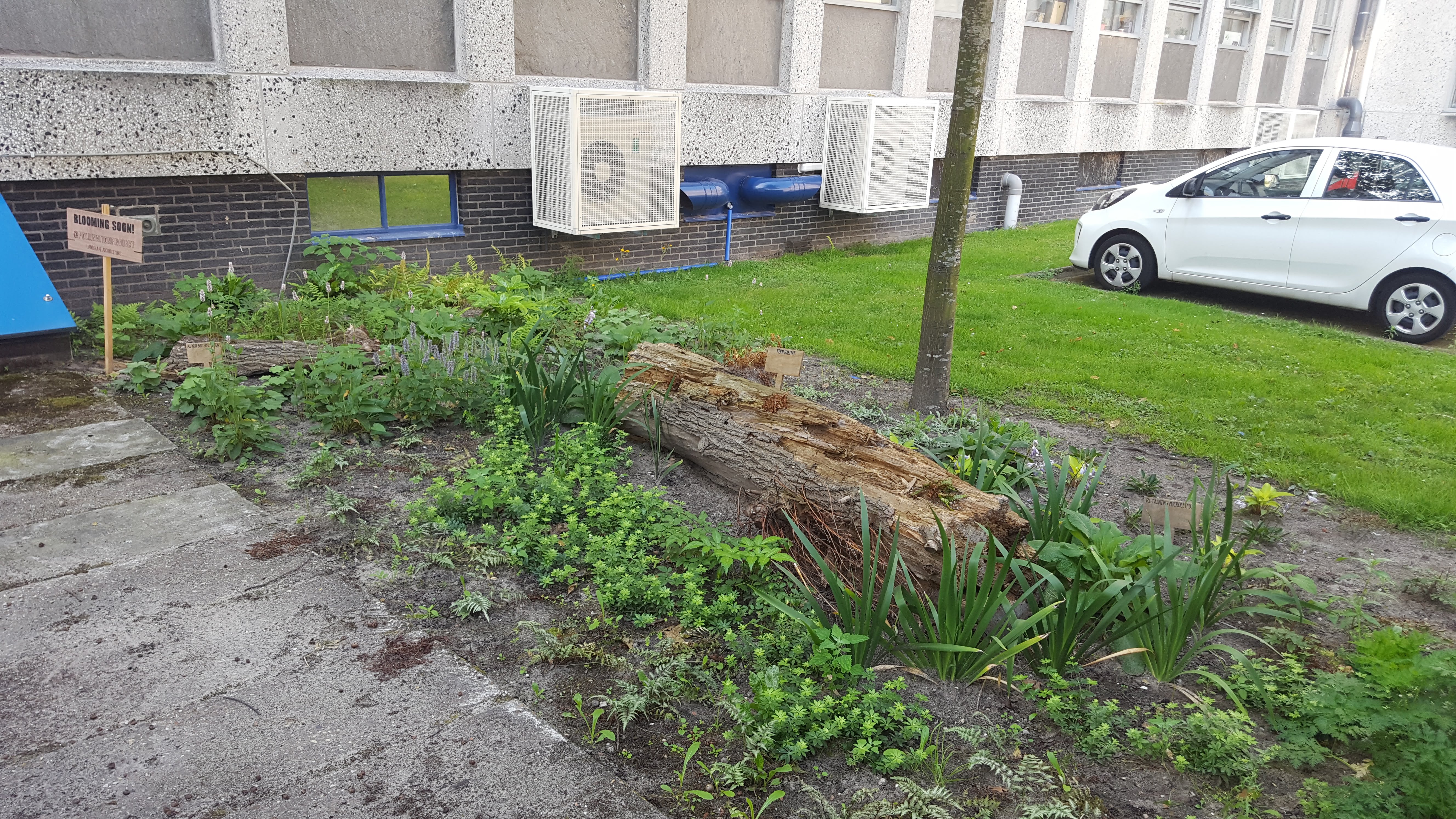
Conventionally shaded spaces created due to built configurations are disregarded by humans and become spots of neglect. However, when we look at nature, the shaded forest floors are a hotspot of biodiversity. Over the years, due to commercial agriculture, most of these forests are being destroyed creating a tremendous loss of habitats for the unique species which thrive in the shaded forests and are rapidly getting extinct.
The existing building looks out upon the garden, which turns the garden into an object of admiration for the seasonal variations plants can bring into a shaded place. At the same time, this garden will also showcase the need of humans to preserve certain species by highlighting them. This way, nature makes humans play an active role in their preservation. Additionally, the goal is to transform this bare green space into a habitat for pollinators and insects. Thereby, the garden also has to create a space that is visually appealing for humans by showcasing seasonal changes.

The realised garden consits of organically shaped patches and flows, being a mix of red listed and supporting species. There are also two tree trunks placed on site. This has to do with the habitat of ferns and heightening the biodiversity. Ferns are suited to shaded and moist places and are a habitat for many insects, when combined with dead wooden trunks and moss, it widens the spectrum of insects it caters to, thereby enriching the species biodiversity that can be found on site.
After the pilot of the red-listed garden, we hope this could be a starting point for a bigger garden. The seeds of the plants that are planted now can travel across the campus by wind, birds or peoples clothes. The patches of grass adjacent to the current garden can be transformed into a red listed garden as well. The vegetation of the garden will amplify the current microclimate and making the location an even more attractive place for flora and fauna. We hope this will attract species of birds and insects which are new to this area. The monitoring of the garden is essential to learn from this pilot project and for it to be exemplary to new development on the campus.
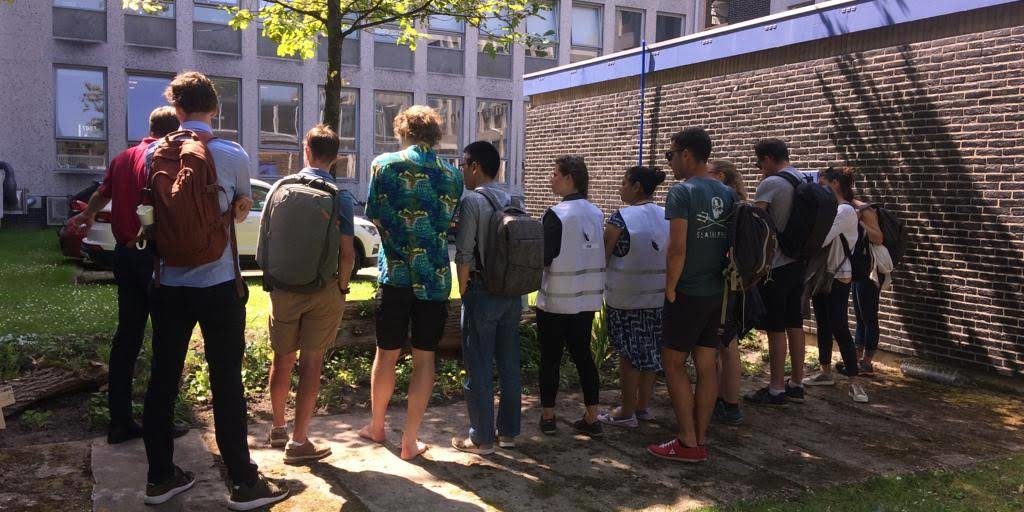

Trickling trail
The artificial water basin and grass bank is creating a moist micro- climate with soil moisture levels gradually decreasing from the water’s edge to the top of the stairs. This gradient of soil moisture levels defines multiple microhabitats. Because of high reeds in summer, human interaction with the water is almost impossible because it is simply not visible. The waterbody has almost no circulation, causing the water quality to be quite bad. These factors cause a low biodiversity and poor human - nature interaction.
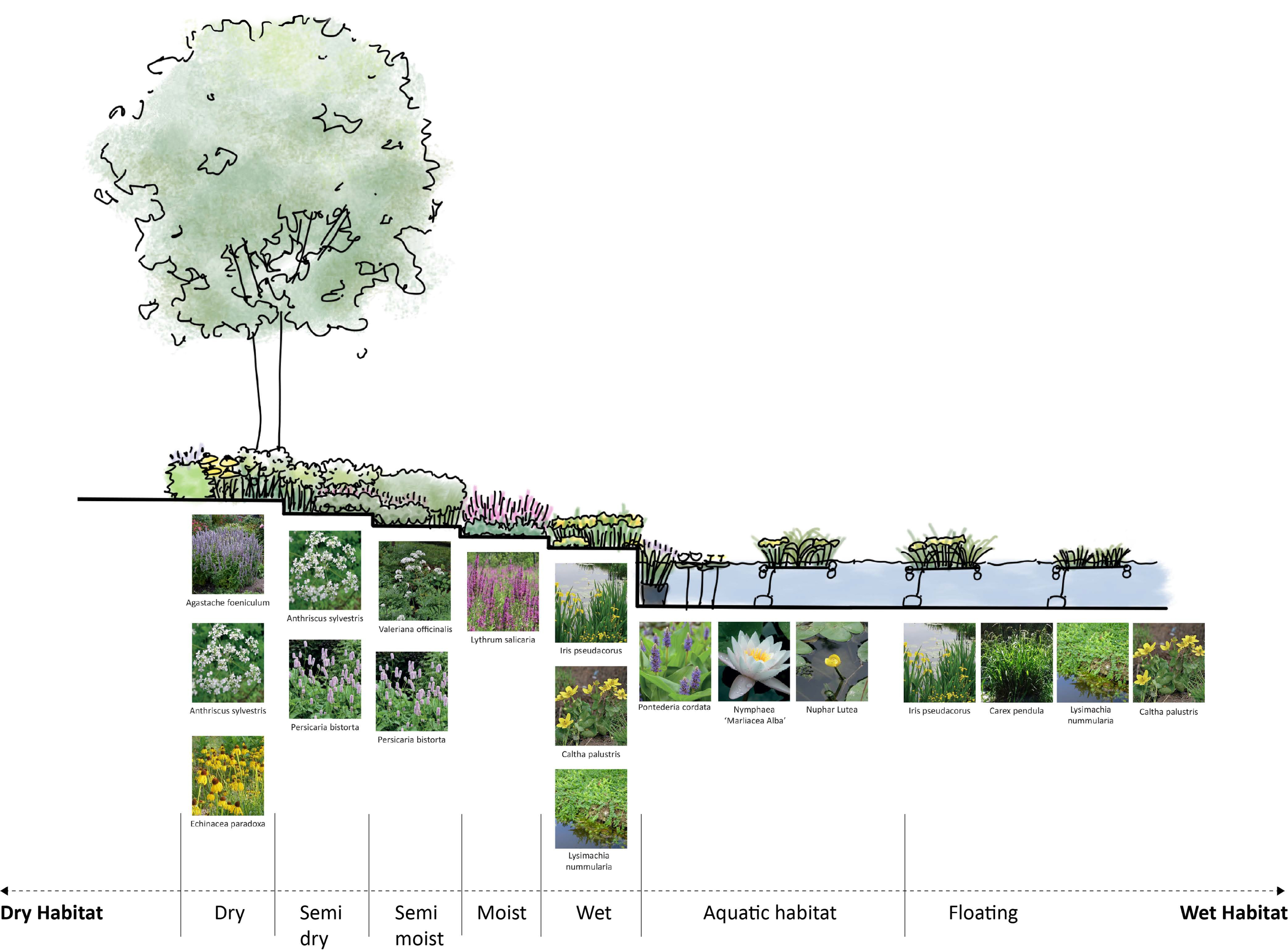
The goal of this site is to highlight the different microhabitat conditions, ranging from dry to semi-dry to semi-moist to moist to wet and finally aquatic, as the border descends into the water. Furthermore, the design aims to highlight the human-nature relation and specifically, the effect of cyborgs created by humans. The latter is done by introducing floating islands that combine biological processes and technology to improve the water quality, and to increase biodiversity in and around the waterbody.
Carefully selected plant species showcase the different microhabitat conditions, ranging from dry to semi-dry, semi-moist, moist, wet and finally aquatic as the garden climbs up the stairs. The gradient is taken to it's extreme by also taking the facade of the Coffee & Bikes building into account. This creates a horizontally stretched garden, going from the facade, down the first slope, crossing a pavement, down the second slope and finally hitting the water. Inside the water, the gradient is further accentuated by creating the islands that gradually disperse over the pond.
The floating islands combine biological processes and technology to improve the water quality and to increase biodiversity in and around the waterbody. The islands are technological and biological at the same time. In order to emphasize this cyborg nature of the water-filtering islands, its most important components - the vegetation roots, a filtering sheeting and a pumping system - are deliberately visible.
Currently, the second slope and three out of ten filter islands have been realised over a width of two meters. The gradients consists of seven levels, going from dry on the top to wet and even aquatic at the bottom. The islands are slightly different from each other regarding choice of species and spatial distribution of plants. The pumping and filtering system of water is undergoing constant experimentation. Through time, it can be observed if the islands function in the intended way regarding water purification and habitat creation for biodiversity. Taking the first set of learnings from this pilot scheme, a further developed design can be initiated in future.
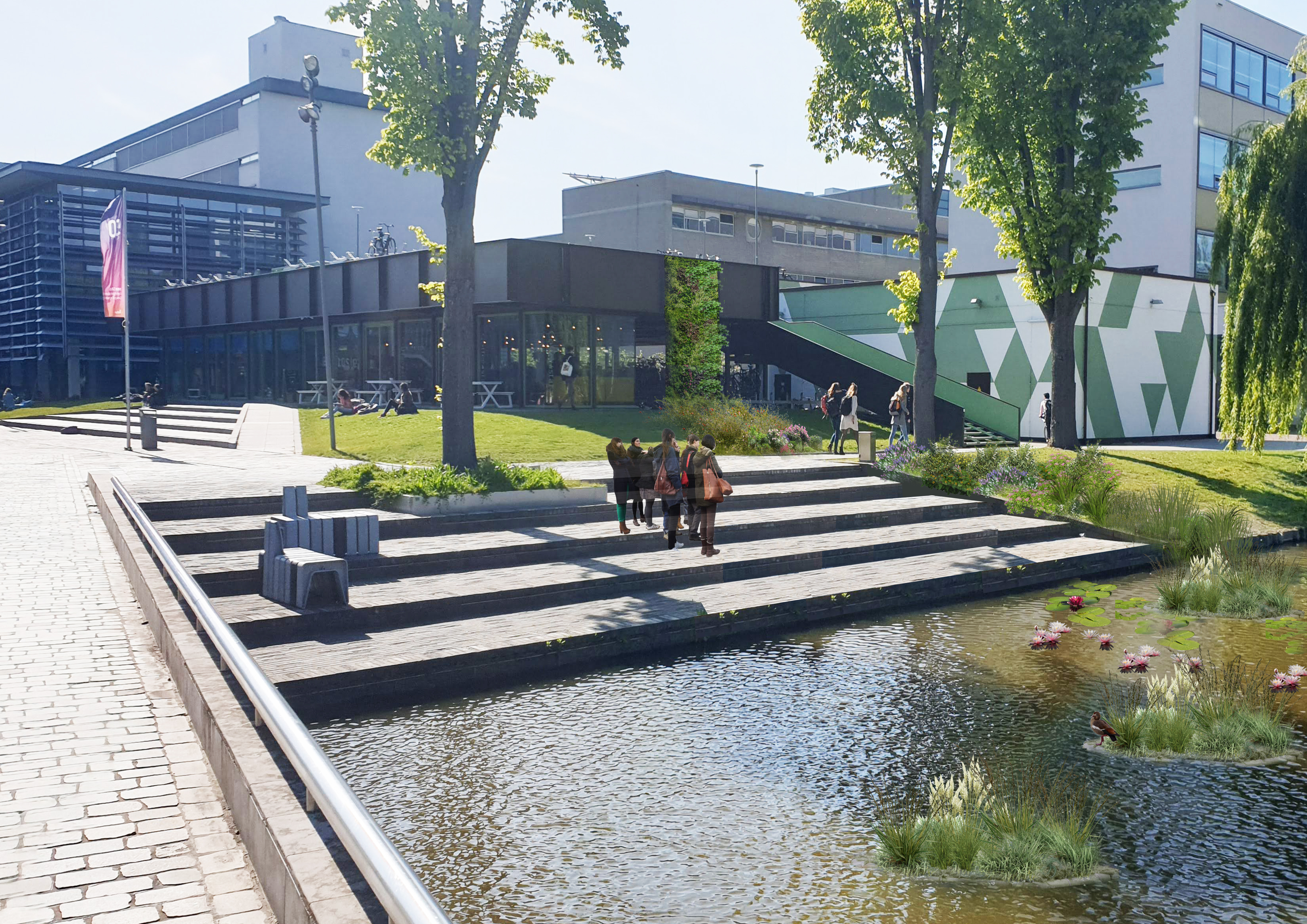
*
Special thanks to the TU Delft maintenance team for their help during realisation and the maintenance of our projects!
*



